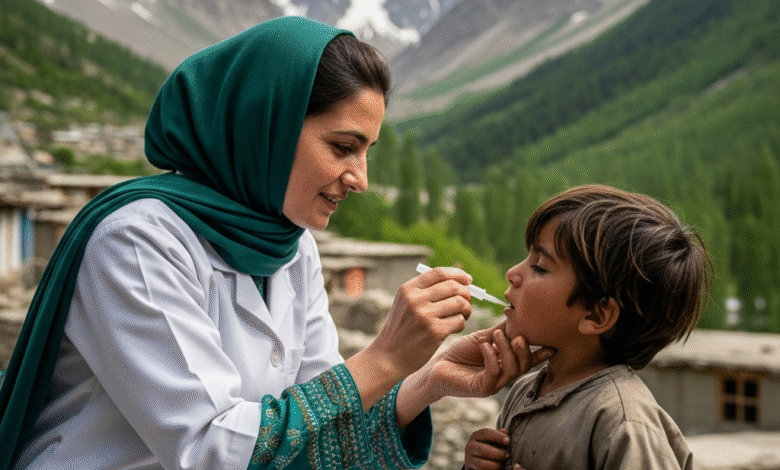Polio Returns: Gilgit-Baltistan Confirms 2025 Case

Pakistan confirms its 11th wild polio case of 2025, the first in Gilgit-Baltistan. Here’s an in-depth analysis of what this means for national eradication efforts and global health security.
In a concerning development for Pakistan’s public health system, the first-ever case of wild poliovirus (WPV1) has been reported in Gilgit-Baltistan’s Diamer district, bringing the national tally to 11 cases in 2025. The confirmation came from the Regional Reference Laboratory for Polio Eradication at the National Institute of Health (NIH), Islamabad, as announced by the Pakistan Polio Eradication Programme.
This marks a significant moment in the country’s ongoing battle against the crippling disease that has been on the brink of elimination yet continues to find pockets of vulnerability.
The First Case in Gilgit-Baltistan
The recent emergence of the first wild poliovirus case in Gilgit-Baltistan marks a concerning development for a region that had previously remained polio-free. This incident highlights the widening of transmission zones and raises serious concerns about potential gaps in immunization coverage. It also underscores the environmental and logistical challenges faced in reaching remote communities with vital vaccines. As a region once considered low-risk, Gilgit-Baltistan’s case serves as a stark reminder that polio remains a global threat, one that can resurface anywhere if vigilance, outreach, and immunization efforts are not sustained and strengthened.
11 Cases and Rising
As of June 2025, Pakistan has reported 11 confirmed cases of WPV1. This upward trend poses a threat to:
-
Global polio eradication goals
-
The reputation and efficacy of the national vaccination programs
-
Cross-border health security, especially with Afghanistan also battling outbreaks
Third Nationwide Campaign Wraps Up
Despite the new case, Pakistan recently concluded its third nationwide anti-polio drive (May 26–31), successfully immunizing over 45 million children under five in 159 districts, including high-risk regions like:
-
Khyber Pakhtunkhwa
-
Balochistan
-
South Punjab
-
Now, Gilgit-Baltistan
The campaign was a logistical and operational feat, mobilizing thousands of health workers, security personnel, and volunteers, yet the newly reported case highlights the need for even more targeted micro-level outreach.
Why Polio Still Exists in Pakistan
Despite years of progress and billions in international aid, polio eradication remains incomplete due to:
-
Misinformation and vaccine hesitancy
-
Inaccessibility of remote regions
-
Security threats to vaccination teams
-
Poor sanitation and contaminated water sources
Global Repercussions
The global health community closely watches Pakistan’s polio status because:
-
Pakistan and Afghanistan are the last two countries with WPV1 transmission
-
Any outbreak here threatens decades of global progress
-
Continued cases may impact international travel policies, funding, and trade
Action Points for Policymakers and Citizens
-
Surveillance enhancement in newly affected and adjacent areas
-
Community-based engagement to counter vaccine resistance
-
Support for frontline workers who face threats during campaigns
-
Greater media coverage of risks and the importance of immunization
-
Global partnerships to maintain pressure and support
From Setback to Strategy
The wild poliovirus case in Gilgit-Baltistan is not just a health update, it’s a strategic inflection point. If Pakistan can refocus its eradication strategy with precision, urgency, and community trust, it can still reach the finish line.
For now, the virus has spoken, and it’s our move.

